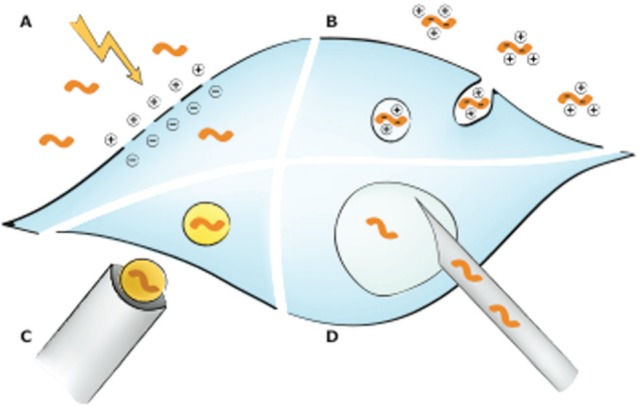Figure 1.

General gene delivery mechanisms. (A) Electroporation. During electroporation, cell membranes are destabilized allowing nucleic acid entry into the cell. (B) Reagent-based techniques. The reagents used form complexes with the negatively charged nucleic acids, which are then taken up by the cell via endocytosis. Reagents include cationic lipids, cationic polymers, and calcium phosphate. Cationic lipids form liposomes, which will fuse with the cell membrane and endosomes causing the release of the nucleic acids into the cytoplasm. Cationic polymers such as polyethylenimine condense nucleic acids. They act as a proton sponge, thus buffering acidic endolysosomes and possibly causing their rupture. How calcium phosphate/DNA precipitates are taken up and released into the cytoplasm is not well understood so far. (C) Biolistic particle delivery. Nucleic acid–coated gold particles are shot at target cells. (D) Microinjection. Via an injection needle, nucleic acids can be directly delivered into the nucleus or cytoplasm. Less frequently used methods to deliver genetic material into cells like magnetofection or laserfection as well as viral transduction methods are not displayed.
